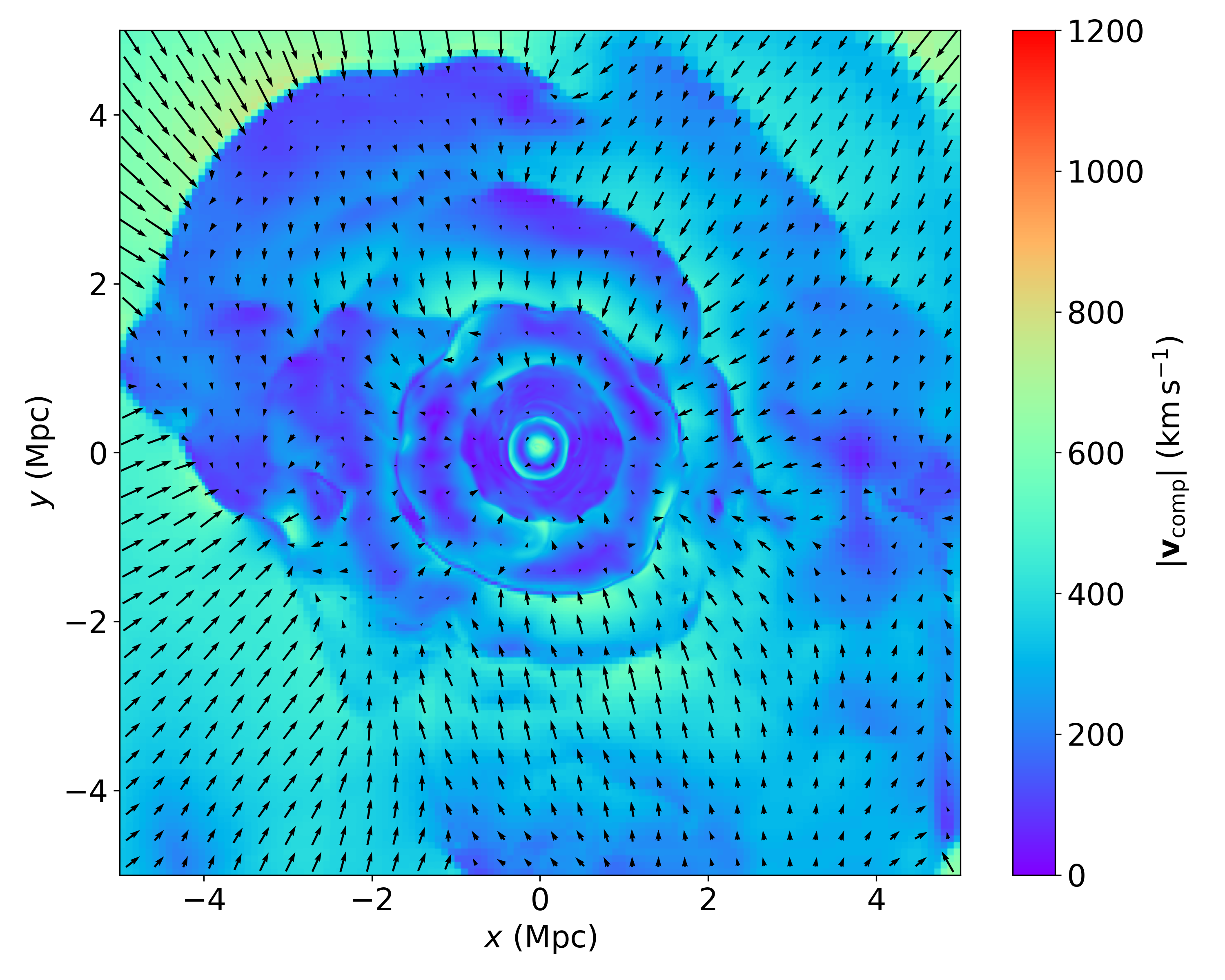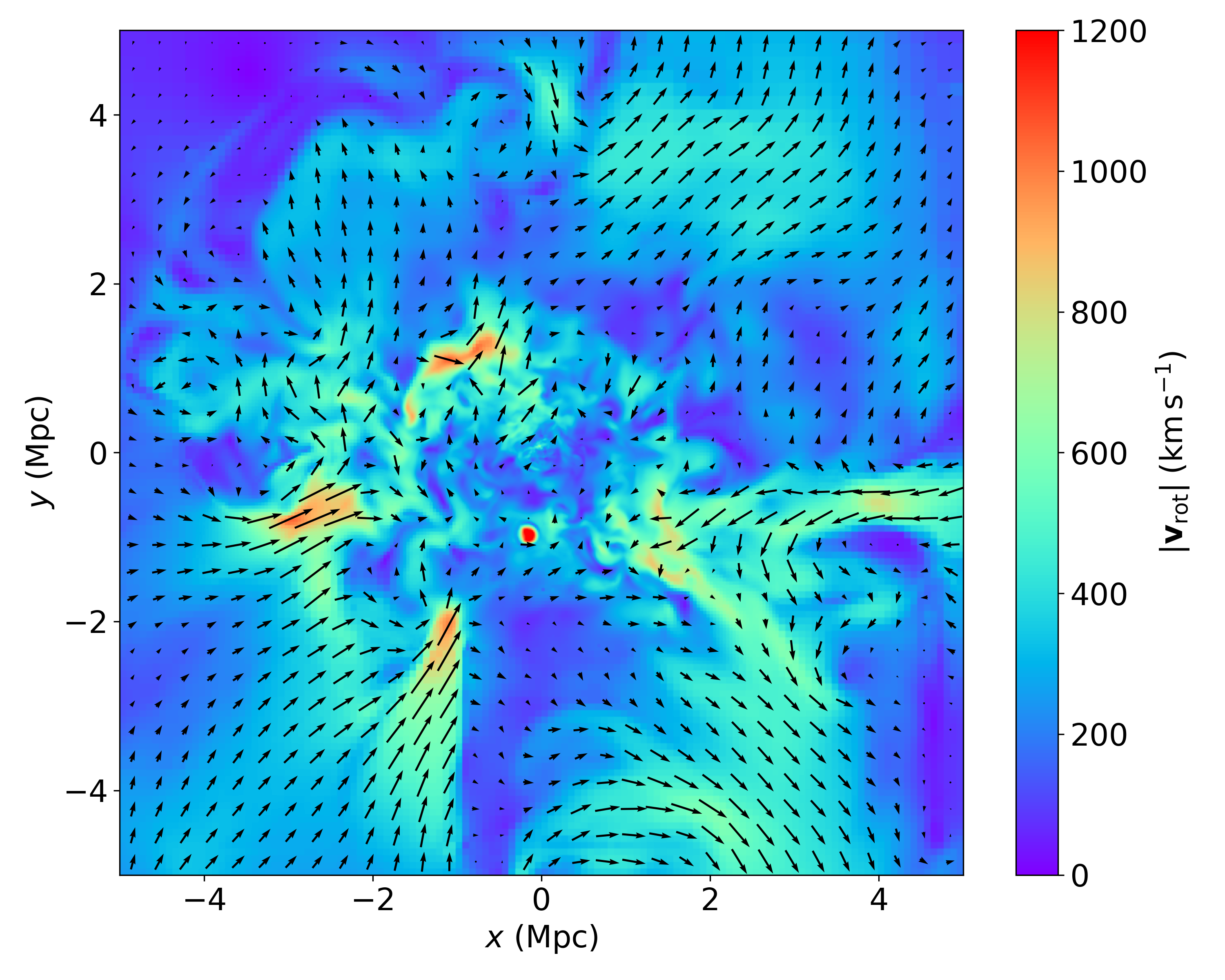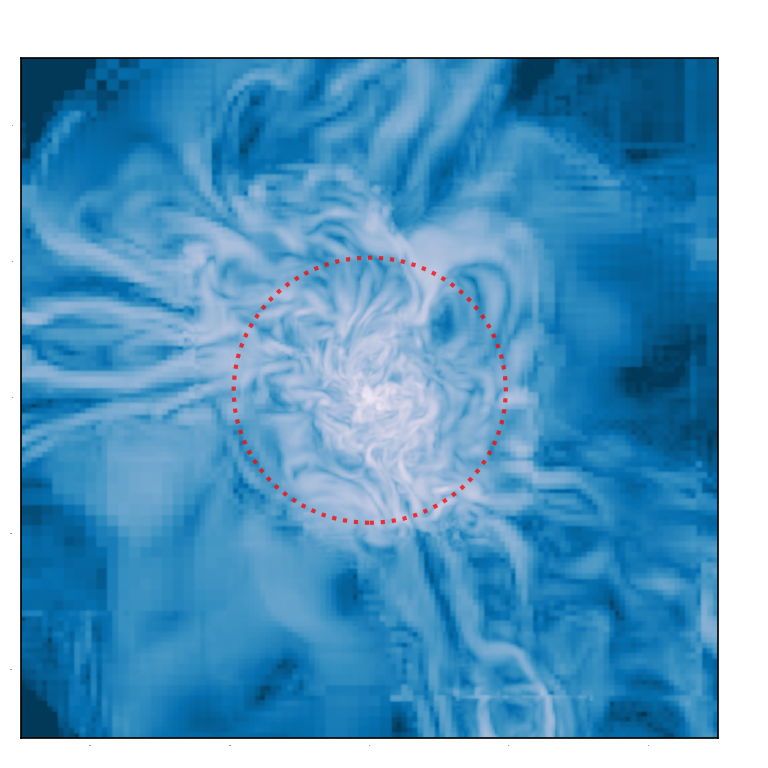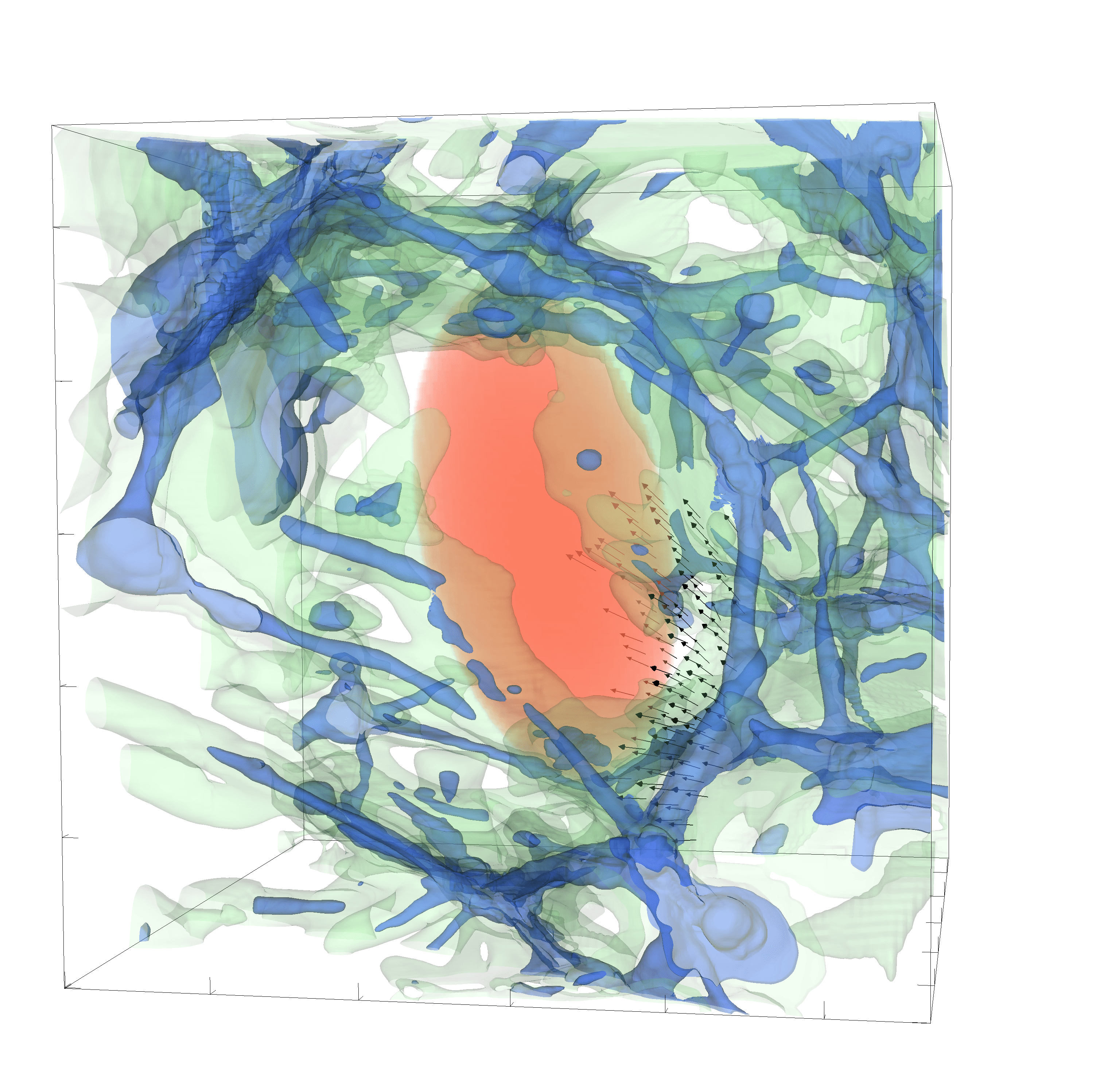Development of analysis tools for hydrodynamical and cosmological simulations
I am the main developer of several tools for the analysis of hydrodynamical and/or cosmological simulations, including:
- vortex: a code to perform a Helmholtz (compressive + solenoidal) and a Reynolds (bulk + turbulent) decomposition of the velocity field of patch-based AMR simulations with a method based on the resolution of elliptic PDEs. [GitHub]
- vortex-p: same purpose as vortex, but for particle-based (or, in general, any unstructured input data) simulations. [GitHub] [docs]
- ASOHF: a spherical-overdensity halo finder for N-Body simulations, capable of dealing with substructures using a multi-scale density field interpolation, as well as characterising galaxies within DM haloes, and building merger trees, amongst other things. [GitHub] [docs]
Additionally, I have contributed to the development of the AMR hydro+N-Body code MASCLET, and am the main developer of the masclet_framework Python library for the analysis of its outputs. I have also participated in the development of the void finder AVISM, and contributed to other software tools for the analysis of cosmological simulations.






